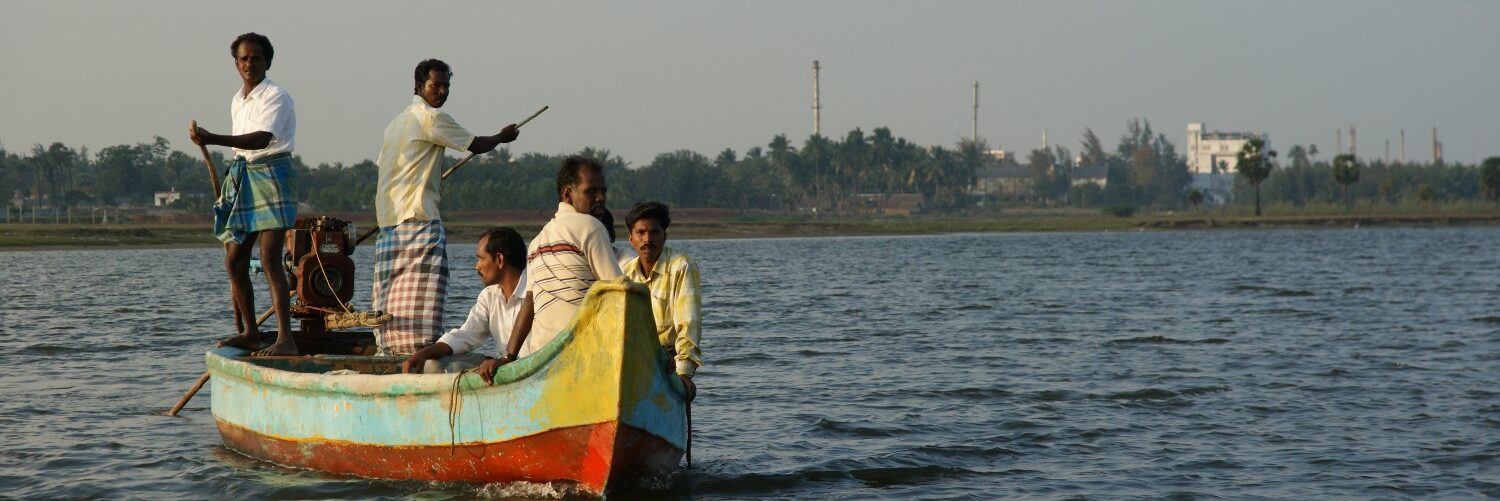13 October, 2004
To: Claude Alvares
Member, Supreme Court Monitoring Committee
Copy: Dr. B. Sengupta, Central Pollution Control Board, New Delhi
13 October, 2004
Beginning midnight 11-12 October, the Central Pollution Control Board deployed a high-volume air sampler to get a time-weighted 24-hour average of air quality in SIPCOT, Cuddalore. In the absence of any express instructions, the CPCB and the TNPCB consulted and were guided around the industrial estate by the industry. The CPCB team went around SIPCOT with CUSECS representatives, CUSECS being the company that provides an effluent collection-forwarding facility for SIPCOT industries. The air sample downwind of CUSECS Sump No. 5 had methylene chloride 905 times above safe limits, trichloroethene at 709 over EPA screening levels, hydrogen sulphide at 874 times what is considered safe.
11-12 October was the first day of sampling. On 12 October, 2004, SIPCOT Area Community Environmental Monitors conducted two pollution patrols. The first was conducted between 8 and 9.30 a.m. The second was conducted between 5 and 6.15 p.m.
The wind direction was Northwards at both times. During both patrols, S. Pugazhenthi (Sangolikuppam village) and G.K. Amrithalingam (Eachangadu village-only morning patrol) took identical routes that started at the Eachangadu village. From here they went along the service road behind Tantech, via the backside of Asian Paints, to CUSECS No. 5, to the gate of Loyal Fabrics (now locked out due to worker dispute), to Kudikadu village school, to Shasun Chemicals and back along the National Highway to Semmankuppam village in the South. The wind direction was Northwards during both patrols. The monitors report that they did not record any perceptible odour downwind of ANY of the industries. Neither did they notice any emissions from the smokestacks at Tantech, Asian Paints, SPIC or Shasun at both times.
On 13 October, 2004, S. Pugazhenthi (Sangolikuppam) patrolled for pollution on his way to (3 a.m.) and back from fishing (7 a.m.) in the River Uppanar. The wind was blowing gently from the east (from the river), and it was cloudy with a slight drizzle at 4 a.m. The route taken was along the Eachangadu Road turning to the area behind Tantech and Asian Paints. At this time, the wind was blowing from Pugazhenthi and the CPCB sampling stations at Eachangadu and Kudikadu towards the industries. Although smoke was observed at Tantech (with a hissing sound) and Asian Paints, there was understandably no odour because the observer was upwind of the said companies.
This evening, we plan to conduct another pollution patrol covering locations upwind and downwind of the industries. Any odour incident will be sampled. However, monitors note that the advance notice given to the industry and the active involvement of the industry in deciding the sampling locations may have reduced the value of this sampling exercise. The industries have been idling or running at reduced capacity, according to the villagers.
We’re bringing this to your notice for the following reasons:
- The CPCB could discuss the matter with the monitors and us so that its efforts are not wasted. This should not be a problem given that even the polluters have been consulted and their assistance sought.
- The CPCB could plan a sampling protocol that allows them to take surprise samples when the industries are in operation.
- The bucket is best suited to catch a sample of the air emissions as and when they are released at the height at which people, children breathe. It may be useful for the CPCB to consider also using the bucket. The village monitors would be happy to train them and/or accompany them to take simultaneous samples.
- The CPCB is not testing for sulphur compounds, but only for VOCs and PAHs. I’m not certain how many or which ones.
I am writing to seek your intervention:
- in keeping the industry at bay and involve the valuable participation of the SIPCOT Area Community Environmental Monitors who have already demonstrated their ability to nail the pollution when it happens.
- in asking the CPCB to obtain daily production details of for 30 days preceding the days of sampling to see if there is any recorded scale-back of operation by the companies.
- in requesting the CPCB to deploy the bucket to map the emissions in SIPCOT. The monitors would be happy to do the sampling in the presence of any officials of your choice as they go about their routine pollution patrols.
Thanks to the District Environmental Engineer, Cuddalore, I have been able to contact Dr. Madhusudhanan who leads the CPCB team. I have forwarded him our report on chemical odour incidents, and a note summarising our reservations and suggestions. I have also sent him the analytical protocol used by the laboratory to process the Tedlar bag samples.
I hope the CPCB and the TN PCB will see the monitors as extra sets of eyes, noses and monitoring bodies rather than as adversaries come to create new work for them. While we’re not seeking to work as part of any Government team, we’d certainly like our work to contribute to the efforts of the CPCB or TNPCB to understand the air pollution problem in SIPCOT.
Sincerely,
Nityanand Jayaraman
The Other Media
H19/4 Gangai Street
Kalakshetra Colony
Chennai 600 090
